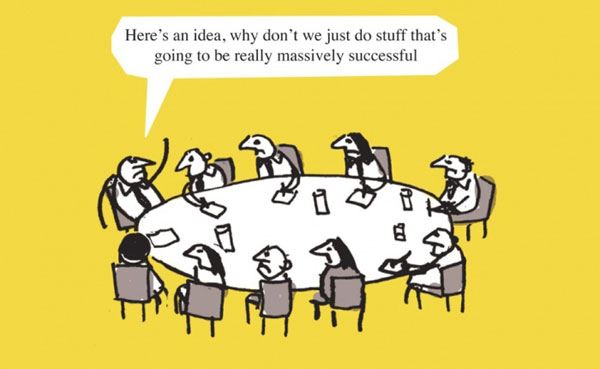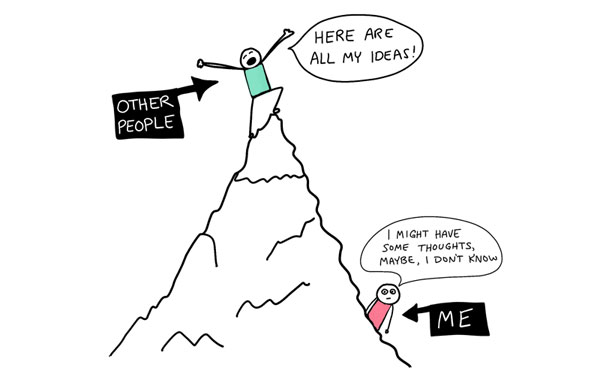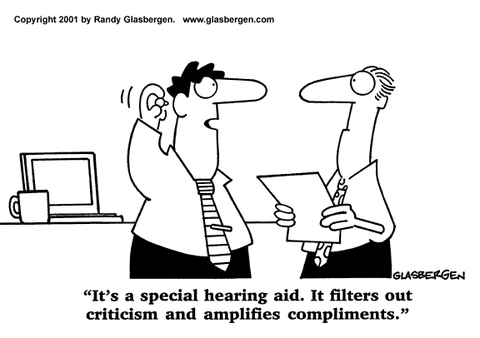
“Would you tell me, please, which way I ought to go from here?”
“That depends a good deal on where you want to get to,” said the Cat.
“I don’t much care where–” said Alice.
“Then it doesn’t matter which way you go,” said the Cat.
“–so long as I get SOMEWHERE,” Alice added as an explanation.
“Oh, you’re sure to do that,” said the Cat, “if you only walk long enough.”
Alice’s Adventures in Wonderland, Chapter 6
Even though we need to set the stage that takes the communication in the wrong direction, the overall feeling is that.. miscommunication just happens.

We might learn how to handle the consequences in our everyday lives, but in business, too much is at stake.
No one should suffer from miscommunication patterns like Alice on her journey.
This brings us to the question: What can cure miscommunication at work?
Good internal communication strategy.
There are many reasons why a good internal communication strategy is important. From the profit and positive company culture to sharing and expanding knowledge and sparking new ideas - a good internal communication strategy can make or break the business.
But, the management can sometimes be the only culprit that weakens the internal communication process.
Before you look into technology that might fulfill your business needs, you should have the management on board. If you are the management, you should recognize the signs that are affecting good communication.
Read about 5 don’t that will jumpstart your internal communication process and learn the solutions.
We only need to tell people what to do. Not likely.
Modern times bring different communication rules. A dynamic and sophisticated process that goes beyond traditional corporate communication should take place in every company, organization, or team. Unfortunately, in most communication processes, information is still passed down from the top with almost no input from the people who are receiving the message.

Internal communication is by no means a process in which people are told what to do.
The solution?
Create an open communication environment and seek feedback from your employees. You won’t know what the problem is if you don’t ask. Asking the right questions will break the ice in the communication process.
The message is the medium. Nope. Not always.
Some people are readers, others are listeners. Some need direct detailed instructions, others prefer briefs. Some use chats or emails and others want to communicate via the internal blog.
“When I use a word, it means what I choose it to mean – neither more nor less.”
Again brilliant Lewis Carroll comes to our rescue with the famous quote by Humpty Dumpty.
There’s a simple, yet powerful message from Alice in Wonderland: when there are no clear communication rules, the stage for miscommunication is set.
Do you know which type of communication style is dominant in your team?
I don’t know. This is what a passive communicator will usually say.

Psychologist Howard Leventhal found out that people will ignore urgent messages if they are not given clear instructions.
In his research study, he handed out two pamphlets explaining the horrific effects of tetanus disease, but only one had a clear Call to Action on what next steps a person should take. Can you guess the result? Those who received clear follow-up on the next steps were 25 percent more likely to get vaccinated.
But you may ask:
This is about marketing, what does it have to do with internal communication?
Some people need clear instructions on how to take action. Don’t assume that the message is the medium.
The solution?
Do your best to find the medium that corresponds to the communication preferences of your team or business. You might not be able to meet all the needs, but the tools you use should offer different communication channels if you want to increase the productivity levels in your company.
Employees are satisfied with the good work environment, salary and job security. Not in this century.
Another wrong assumption. Are you familiar with Herzberg’s Motivation-Hygiene Theory?
A psychologist Frederick Herzberg published a theory in 1959 that suggests that job dissatisfaction and satisfaction are measured differently.
According to the theory, a person becomes dissatisfied with the job based on the “hygiene” factors that include job security, salary, and physical work environment. On the other hand, satisfaction comes from factors such as work enjoyment, a sense of achievement, and responsibility.
What does this mean? A high-paying job could still make employees feel dissatisfied with the job unless they feel a sense of achievement.

What motivates your team or individuals at work? Perhaps your employees are telling you but you are not listening. The information might be lost in the stream of chat messages.
The solution?
Test different tools to understand what is the best way to inform your employees they are contributing. Make sure your team members or employees know their work is valued and recognized. Wikis can be especially good tools for businesses that are driven by creativity. Essentially, wikis can create platforms for everyone to collaborate, including the senior management.
Our team has time management problems. Are you certain?
Never underestimate the power of a group.
Do you know what is groupthink behavior?
We are social beings and have a natural urge to find our “pack”, but “our packs” can impact our personality and change our behavior. When we are around others, being concerned about our image and how other people see us, we tend to act differently.
The desire to be socially accepted is strong, to say the least. Psychologist Solomon Asch found that a group can easily fall into a pattern of conformity thinking, or groupthink.

When such behavior is recognized, leaders should act as innovation advocates and change the dynamic of the group to initiate creativity.
OK, but what does groupthink behavior have to do with internal communication?
If you change the term group to the department, you will see where the problem might lie.
People are often put into groups/departments without proper evaluation of their needs or skills. As the group increases in numbers, the individual contribution can decrease.
In psychology, this concept is known as Social Loafing where motivation and diffusion of responsibility can also contribute to undermining different opinions. Moreover, conformity thinking tends to create an atmosphere where people feel less personal accountability. This is when they start to feel that their individual efforts have little or no impact.

Another psychological principle known as Social Facilitation found that people in the group tend to perform better when working on simple tasks and worse on complicated tasks. This notion can be valuable for a manager.
So, are you recognizing conformity thinking in your company?
The impact of communication is only determined 7% by the words used.
The solution?
Maintain an open environment where everyone can express ideas and concerns. We are increasingly using chats to communicate, but is that the right choice? An internal blog can facilitate communication and create a dialogue between the departments. Test tools before you decide what is good for your team.
Hearing is listening, and reading is hearing. Not always.
We find value in a two-way exchange of information. But not just any information. People seek a meaningful and informed exchange of knowledge where each participant brings and receives the value.
This is not possible without transparency in communication. Today, this is the factor that closely correlates with the idea of a safe and smart business built on trust and cooperation.

Communicating any change in the organization and involving employees in the decision-making process are premises for transparent communication. And transparency should apply to everyone.
Is your message lost in X replies?
Email is still a reliable source of information for most workplaces. For quite some time now email has been used as a channel for employee engagement. However, younger generations prefer social apps and chats as they are more engaging and flexible to use.
Email may be better than no communication at all, but is it delivering relevant information?
The feedback from employees is an essential building block of the company that wants to thrive.
The solution?
Transparency is the best model to use to keep employees informed and involved. Increasing the degree of transparency will require a change in your communication channels and models. If you want to be certain that the message is received, some tools can measure the impact and give you a better understanding of how the message is understood.
Conclusion
Most managers make assumptions, and thus make mistakes.

But the good news is that leaders do value internal communication.
When it comes to miscommunication, the solution is not only to look for new models of communication but to ensure that internal communication is flowing in two directions.
Communication barriers can cost you. If you are looking for a way to empower how your management and employees communicate, don’t only take it from our words, try the solution we have to make internal communication processes smooth, effective, and engaging.
A business should turn passive employees into active communication participants. This is what we at Blogin are making happen.
 BlogIn is a beautifully simple internal blog and knowledge-sharing platform for teams of all sizes.
BlogIn is a beautifully simple internal blog and knowledge-sharing platform for teams of all sizes.Start 14-day free trial or get more information
